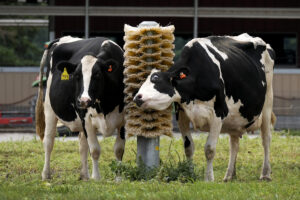Afghan Women Use Art to Resist the Taliban
As public spaces for women continue to diminish each day, some Afghan women have transformed a corner of their own homes into an artistic battleground to resist the Taliban’s oppressive rule. Atena Soltani / Instagram
Atena Soltani / Instagram
Husneya Saidi did not leave her home for two months after Taliban fighters stormed into Kabul, Afghanistan, on August 15, 2021. Her decision was driven by fear and uncertainty, as the city experienced the most significant shift in power dynamics in nearly two decades, resulting in an unstable political climate.
Afghan women’s worst fears became their harsh reality. The streets of Kabul were devoid of women’s presence. “Seeking shelter in a corner of my house, it felt as though the earth was shifting beneath me,” says Saidi. “A sense of panic began to swell within me.” For the women of Afghanistan, the Taliban’s resurgence signified the potential erasure of all their accomplishments.
The 21-year-old Saidi, who was raised in Kabul, knew about the Taliban, but only from a distance. She was born just a few months after the United States invaded Afghanistan on October 7, 2001, and ousted the previous Taliban regime. She had never seen Taliban fighters in her neighborhood. All she knew about the group was either from the news, or from stories her parents and others told her.
In Kabul, under the protection of the U.S.-backed Afghan government, Saidi found hope and opportunity as she pursued higher education during the war. She had a thirst for knowledge, and attended Kabul University, where she studied Islamic law and aspired to become a lawyer.
After its recent return to power, the Taliban claimed that the ban on women’s education was essential to prevent gender mixing in universities, and asserted that certain subjects being taught, such as agriculture and engineering, were in violation of Islamic principles. The Taliban’s Minister of Higher Education, Neda Mohammad Nadeem, said repeatedly that Afghan women’s behavior was in breach of the country’s Islamic moral code of conduct, and that they dressed like they were “attending a wedding function.” According to Saidi, men and women had already been segregated within educational institutions before the Taliban implemented its ban.
With the Taliban back in control, Saidi’s dreams of furthering her education and pursuing a career in Islamic law have been shattered.
The departure of U.S. troops from Afghanistan in 2021 marked the beginning of a new era in the country, turning Saidi’s world upside down. Taliban leaders swiftly regained control of the country, imposing their strict and oppressive rule. As they restored the Islamic Emirate, they dismantled the progress that had been made in women’s education and rights.
Under the previous government, women made up about 30% of the workforce in Afghanistan. Approximately 5,000 women were part of Afghanistan’s military, police, and security forces. And there were between 250 and 300 female judges in the country, most of them in Kabul, comprising approximately 8% to10% of the judiciary as a whole. But now, the Taliban government does not have any female judges on its payroll, and with the exception of the health care industry, Afghan women are prohibited from working outside the house.
With the Taliban back in control, Saidi’s dreams of furthering her education and pursuing a career in Islamic law have been shattered. The once vibrant and bustling university campus she frequented is now a shadow of its former self, as women like her were forced to abandon their aspirations and retreat to the confines of their homes.
Yet retreating to the corner of her home did not signify the surrender of Saidi’s dreams. Instead she was determined to seek alternative ways to pursue her education and ambitions.
In the privacy of her home, Saidi found an online storytelling and writing course launched by Homeira Qaderi, an author and human rights advocate. As she delved into the world of narrative and storytelling, Saidi discovered a powerful medium through which she could give voice to the experiences of Afghan women living under Taliban rule.
With each lesson, she felt her skills as a storyteller growing, and she soon found herself weaving tales that captured the resilience, strength, and courage of women like herself who refused to give up on their dreams. These stories became tools in the arsenal of the students in the course, empowering them to challenge the Taliban’s oppressive regime through the power of narrative. “They may have closed the doors of the university to me, but I will fight them with the might of my words,” says Saidi. “My pen will serve as my unyielding weapon.”
She is not alone in her struggle; Saidi’s sentiments are echoed among numerous Afghan women who, like her, appear determined to resist the Taliban’s oppressive rule. They have transformed the hidden corners of their homes into personal sanctuaries, where they wage a quiet battle against the Taliban’s restrictions.
Armed with their pens and the strength of their convictions, Afghan women have turned to writing, storytelling, and art as a means of resistance, standing together in solidarity and fostering a sense of empowerment that echoes across the nation. Addie Esposito, writing in the Harvard International Review about Afghan women artists, concluded that “art and women remain the greatest perceived threats to Taliban control.”
Soltani holds on to the belief that Afghanistan’s current circumstances will eventually change, and that women will reclaim their freedom.
Atena Soltani, a 22-year-old student, had been pursuing her passion for art at Herat University before the Taliban’s return. Although she was able to complete her coursework, she found herself unable to receive her hard-earned diploma as the Taliban refused to issue certificates to female students, even those who had already completed their education.
“On the day the Afghan government succumbed to the Taliban, my heart sank into [the] ground. With tears streaming down my face, I grieved beside my mother. Since then, finding a reason to smile has proven to be a challenge,” says Soltani.
Unable to regain her happiness, Soltani began using art to challenge the Taliban. Through her evocative paintings, she captures the daily struggles and resilience of Afghan women living under the oppressive regime.
“History has repeated itself. The Taliban declared their war on women, compelling us to select our weapons and engage in the battle against their tyranny,” she says. “Thus, my paintbrush becomes my weapon of choice. I illustrate the anguish and losses endured by Afghan women. The world may have forgotten us, but our battle against oppression persists.”
Soltani holds on to the belief that Afghanistan’s current circumstances will eventually change, and that women will reclaim their freedom. Until that day arrives, she is resolved to continue creating evocative paintings, capturing the essence of the women’s struggle, and sharing these visual stories with the outside world as a testament to the resilience and hope of women in Afghanistan.
In her struggle for change, Soltani has found an unexpected ally in another artist, Kimia, who does similar work (like many Afghans, Kimia uses only one name). At 23 years of age, Kimia finds herself in a slightly more fortunate situation than Soltani and Saidi. When the Taliban returned to power, she was merely one semester away from completing her studies in journalism at Kabul University. Determined to graduate, she persevered through her final semester under the Taliban’s oppressive regime, adhering to a stringent dress code that mandated she wear a head-to-toe covering.
Artists like Soltani and Kimia are envisioning and illustrating their ideal future—a future where women are free.
Kimia’s passion for art was ignited four years ago. In addition to attending university, she has taken a variety of art classes outside of college. Kimia sees art as a powerful means of exposing the Taliban’s brutality to the world, and says, “Staying silent isn’t the answer. We must confront the Taliban, using our pens to fight against their guns—and I am confident that the pen will prevail.” Her art depicts the realities she experiences and witnesses around her, and the challenges of living under an oppressive rule.
Although they have never met and live hundreds of miles apart—with Soltani in Herat and Kimia in Kabul—both artists share a common objective: to portray the pain of Afghan women through their art. Both are producing art that reflects not just the challenges women face in Taliban-controlled Afghanistan, but also the courage and resilience they show in the face of these difficulties. For instance one of Soltani’s paintings depicts a woman who is fully covered, asking for help in sign language. Another piece portrays a girl holding a notebook while a Taliban fighter points a gun at her.
Artists like Soltani and Kimia are envisioning and illustrating their ideal future—a future where women are free. One of Kimia’s pieces depicts a woman wearing an Afghan Gand dress, a beautifully handcrafted and embroidered red dress adorned with jewelry. The wind tousles the woman’s hair, and she is not wearing a traditional covering. Another painting portrays a young girl seated atop a stack of books, with a chain around her ankle. This image reflects the current situation in Afghanistan, where girls over the age of 12 are forbidden from attending school.
Kimia hopes her paintings are testimonies to the strength and resistance of her people, and that her art inspires widespread support for their plight: “The Taliban may impose restrictions on our public lives, but they can never extinguish our unwavering determination to learn and relentlessly pursue our dreams.”
Your support is crucial…With an uncertain future and a new administration casting doubt on press freedoms, the danger is clear: The truth is at risk.
Now is the time to give. Your tax-deductible support allows us to dig deeper, delivering fearless investigative reporting and analysis that exposes what’s really happening — without compromise.
Stand with our courageous journalists. Donate today to protect a free press, uphold democracy and unearth untold stories.









You need to be a supporter to comment.
There are currently no responses to this article.
Be the first to respond.